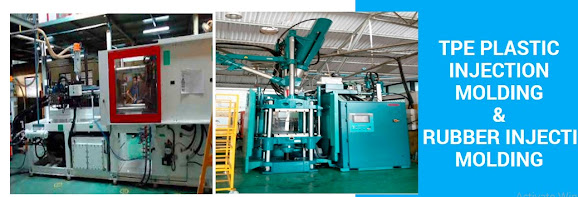Rubber injection molding

In the latter part of the 20 th century, experts introduced techniques for rubber injection molding that were similar to plastic molding. In almost all rubber injection molding procedures, rubber is heated at extremely high temperatures and injected into molds. Given below is a detailed description of how rubber is molded. Preparation of materials Synthetic or natural rubber is mixed with appropriate additives to satisfy the specifications mentioned for future design use. The synthetic rubber is called elastomer and the rubber obtained after mixing is called thermoset elastomer. This thermoset elastomer is now fed in the form of strips into the screws and barrels where the rubber is heated at temperatures that are slightly lower than that of the considered rubber mold. Injection of the rubber Now the compounded material is injected via the channels of the tool to finally reach the cavities of the hot mold that is closed. In this stage, the compounded material is subjected to a ...